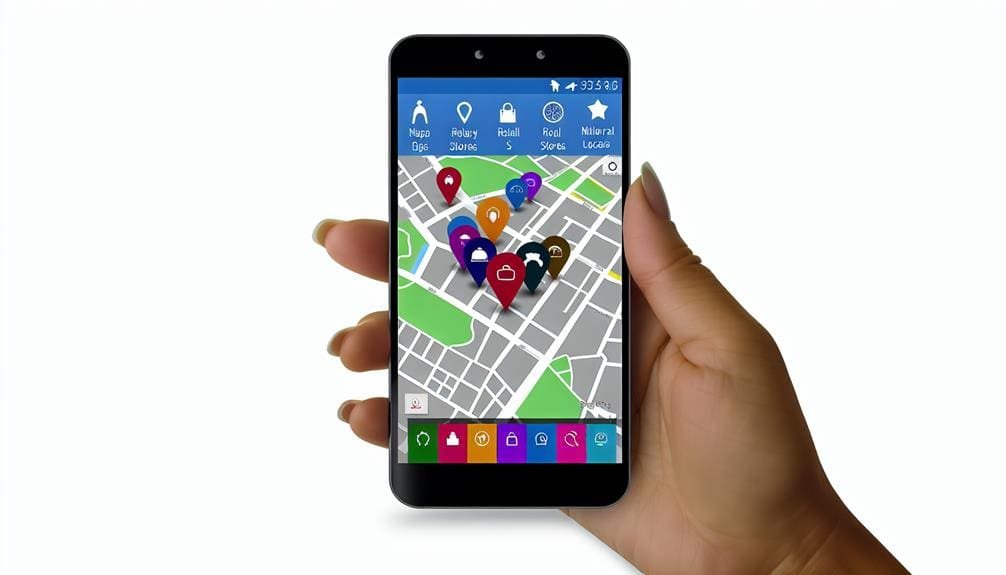How Mobile Page Speed Affects Your Local SEO
February 15, 2024 | by Jacob Cavazos

When we analyzed the top-ranking local businesses in our area, we found that their mobile pages loaded in under three seconds, a speed that's not just impressive but necessary for staying competitive. As we dive deeper into the intricacies of local SEO, it's clear that mobile page speed isn't just a user preference—it's a critical ranking factor. Our data shows that slow mobile experiences drive potential customers away, increasing bounce rates by up to 90% for pages that take five seconds to load compared to those that load in just one. It's crucial for us to focus on actionable strategies, such as optimizing image sizes and leveraging browser caching, to enhance our mobile page performance. But how exactly do these technical changes translate into better local search visibility and, ultimately, more foot traffic to our businesses? We're about to explore the tangible benefits of these optimizations and the pitfalls of ignoring them, ensuring our local SEO efforts aren't left in the dust by competitors who prioritize mobile speed.
Understanding Mobile Page Speed
Grasping the concept of mobile page speed is essential, as it's a critical factor that influences user experience and search engine rankings. We recognize that page load time is a pivotal element of page experience, a suite of signals that Google uses for ranking mobile pages. Our goal is to master the intricacies of mobile page speed to not only enhance user engagement but also to secure a favorable Google Ranking.
To achieve this, we delve into Google PageSpeed Insights to analyze and optimize our mobile pages. This tool provides us with actionable data on Core Web Vitals, which are specific factors Google deems important for the user experience, such as the server response time and visual stability of a page.
We're also proactive in implementing Accelerated Mobile Pages (AMP) where appropriate, recognizing that page speed is a ranking factor that can't be ignored. AMPs can dramatically reduce load time and improve the overall performance of mobile pages.
Mobile Speed's Role in Rankings

We understand that a mobile page's loading speed is a key determinant in its search ranking, as Google prioritizes faster pages to enhance user experience. The algorithm's inclination towards speed as a ranking factor is evident in the rollout of the Speed Update, which solidified page load speed as a critical component in Google search results. Employing Google's PageSpeed Insights tool allows us to dissect our page performance, focusing on Core Web Vitals, a set of metrics that Google uses to assess user experience quality.
It's imperative to recognize that mobile page speed is not just a technical metric; it's a reflection of how well we engage our audience. Quick-loading pages translate to reduced bounce rates and longer session durations, thereby improving our overall ranking factors. By integrating Accelerated Mobile Pages (AMP), we can further boost our mobile pages' load speed, giving us a competitive edge in the Google ranking landscape.
To master our local SEO, we must continuously optimize our mobile page speed. Let's leverage the insights provided by Google, implement AMP where beneficial, and monitor our Core Web Vitals to ensure that our mobile site's performance aligns with ranking best practices.
User Experience and Conversion Rates

Understanding that fast-loading sites not only enhance user satisfaction but also significantly boost conversion rates, it's essential to prioritize page speed in our digital strategy. As we delve into the nuances of how page speed affects SEO, we must acknowledge its role as a ranking factor. Google's algorithm favors websites that load quickly, recognizing the critical link between speed and a good user experience.
To directly impact our conversion rate, we're committed to improving page load times. Studies have shown that even a one-second delay can lead to a significant drop in conversions. We use tools like Google's PageSpeed Insights to analyze and enhance our mobile site performance. By focusing on metrics such as First Contentful Paint (FCP), we identify and reduce the time it takes for a page to begin rendering.
Our goal is to create a seamless, frictionless mobile experience for our users. We systematically optimize images, streamline code, and leverage browser caching to shave precious milliseconds off our loading time. Through these efforts, we not only elevate user experience but also see a tangible improvement in our conversion rates, underscoring the profound impact that page speed can have on our local SEO success.
Technical Factors Affecting Speed

To optimize our mobile page speed, it's vital to address technical factors such as server performance, hosting quality, and the efficiency of our website's code and multimedia elements. These are foundational to achieving faster load times, which Google's search results now prioritize as a ranking factor for mobile SEO.
Here's what we need to focus on for speed optimization:
- Server Performance: Select a server that can handle our traffic volume efficiently. Google Chrome's Web Vitals report can provide insights into server response times.
- Code Efficiency: Minimize the code. Use modern coding standards to ensure our mobile site takes the least amount of time to load.
- Optimized Multimedia: Compress images and videos without losing quality. Large file sizes are notorious for slowing down loading speed.
- Quality Hosting: Invest in a hosting solution that offers fast Internet connections and can scale with our traffic demands.
Strategies for Mobile Speed Optimization

Implementing effective strategies for mobile speed optimization can significantly boost our site's performance and user satisfaction. In light of Google's Speed Update, which prioritizes loading speed in mobile searches, optimizing page speed is crucial. Google recommends focusing on metrics like Largest Contentful Paint (LCP), which measures the time it takes for the main content of a page to load.
To improve user experience on mobile devices, we must minimize server response times. This involves choosing a reliable hosting solution and implementing server-side optimizations. Compressing images and text can also drastically reduce load times, ensuring that users aren't kept waiting.
We should leverage browser caching, which stores resources locally on users' devices. This means that on subsequent visits, pages load faster since the browser doesn't need to retrieve the same content repeatedly. Additionally, it's important to remove any non-essential elements that could slow down our site. This includes unnecessary scripts, bulky media files, and excessive redirects.
Lastly, we must regularly monitor our site's performance and adjust our strategies as needed. Tools like Google's PageSpeed Insights provide actionable recommendations for further improvements. By diligently applying these strategies, we can ensure a swift, responsive user experience, which is fundamental for maintaining our local SEO ranking.
Frequently Asked Questions
Does Mobile Speed Affect Seo?
We've found that mobile speed indeed impacts SEO, as fast load times enhance user experience, reduce bounce rate, and improve search ranking, giving us a competitive edge with increased traffic flow and visibility.
How Does Page Speed Affect Seo?
We've found that improved load times significantly boost SEO by enhancing user experience, reducing bounce rates, and aiding conversion optimization. Streamlining server response, optimizing content delivery, and compressing images are key to performance success.
Why Mobile Page Speed Is Important?
We're in a race where load times are hurdles, and speed optimization is our sprint technique. Faster mobile pages win user engagement, improve conversion rates, and give us a competitive edge in brand perception.
How Much Does Site Speed Affect Google Ranking?
We've found that site speed significantly influences Google ranking, with speed metrics directly affecting user patience, conversion rates, bounce probability, and server response. Employing compression techniques and caching strategies is crucial for optimizing performance.
RELATED POSTS
View all



